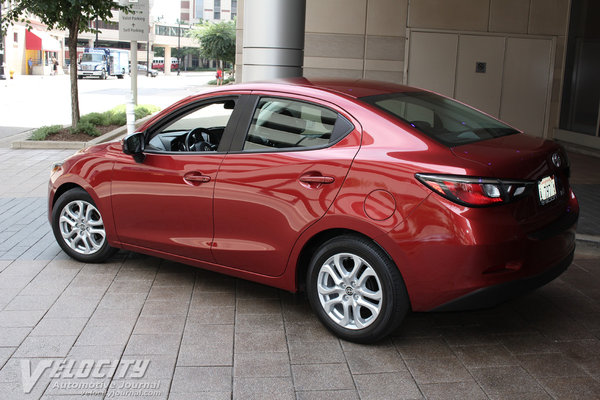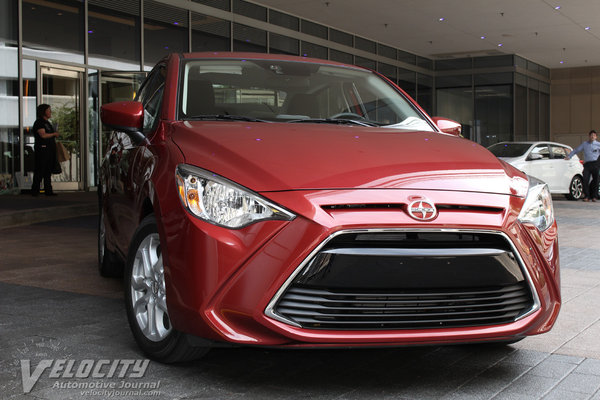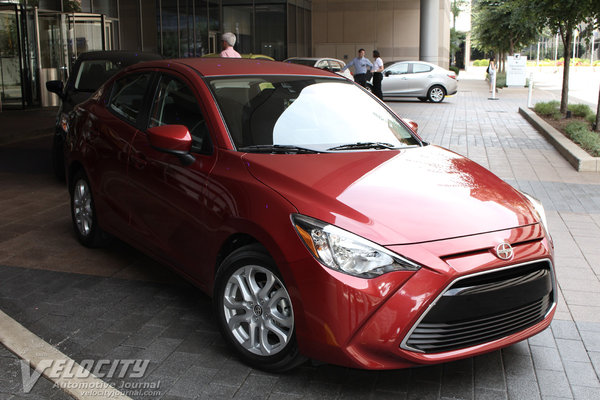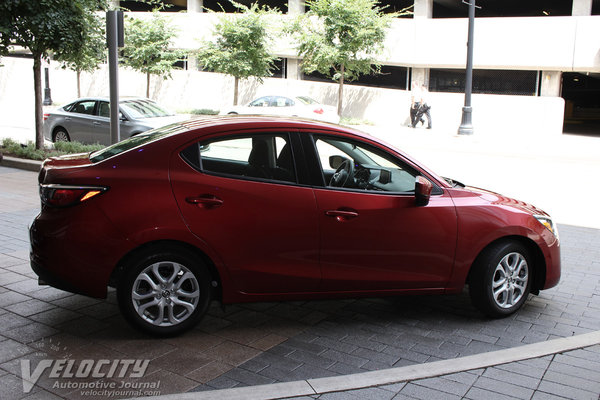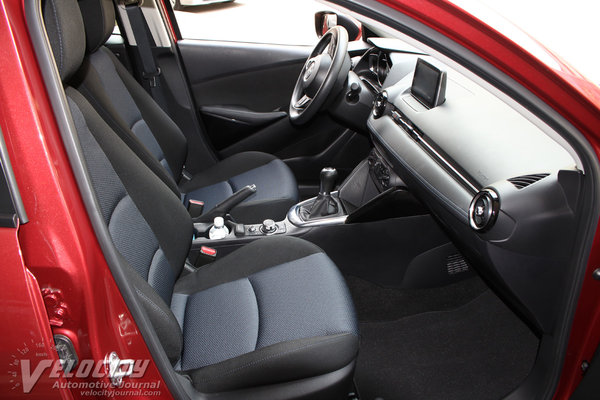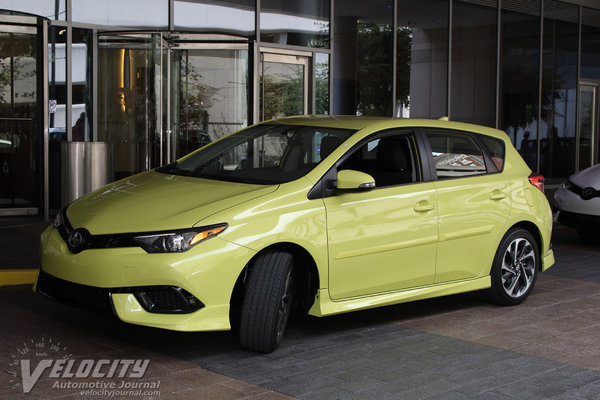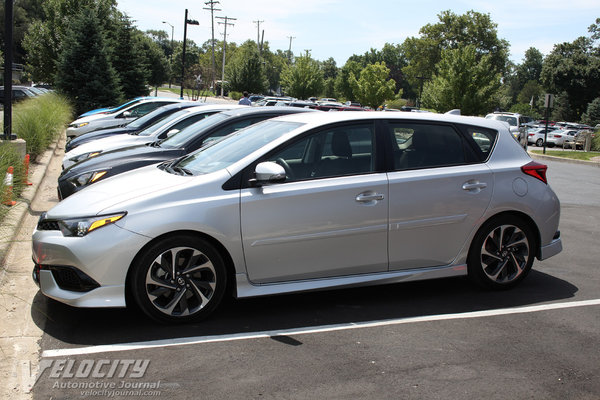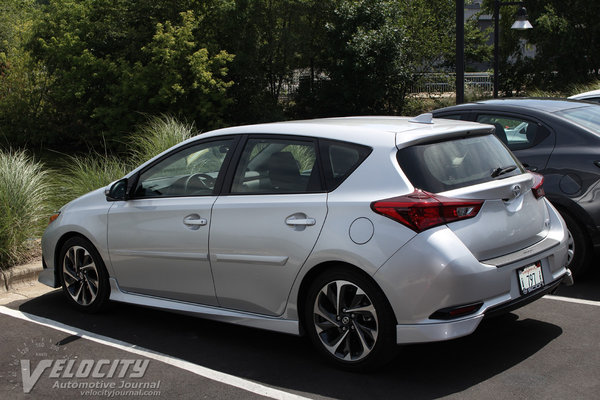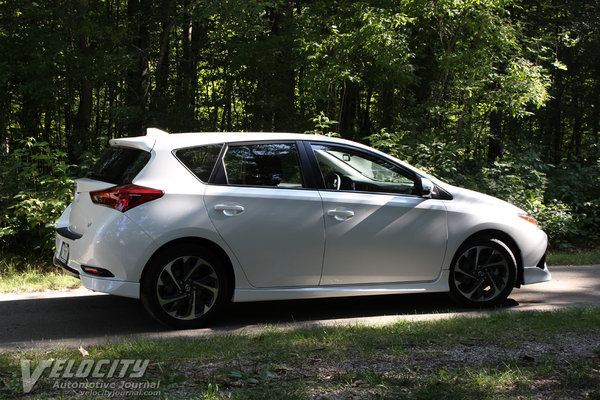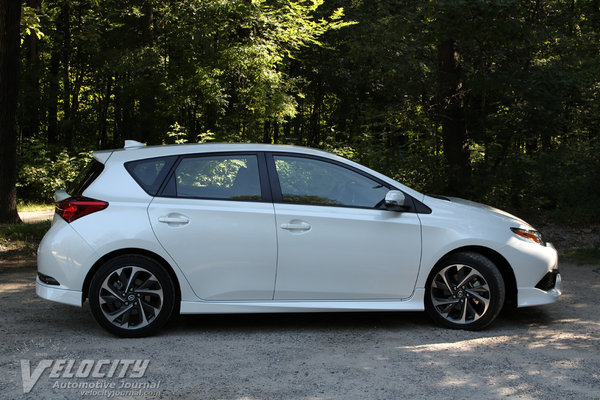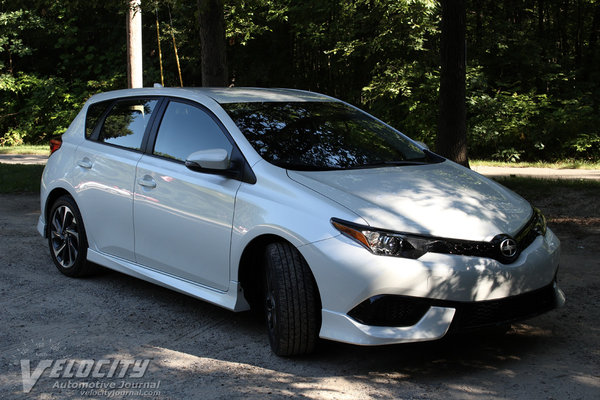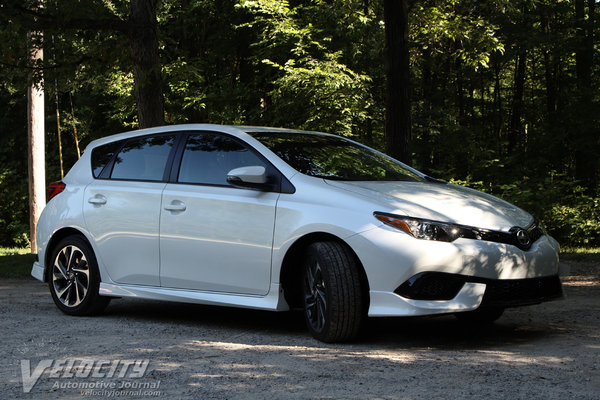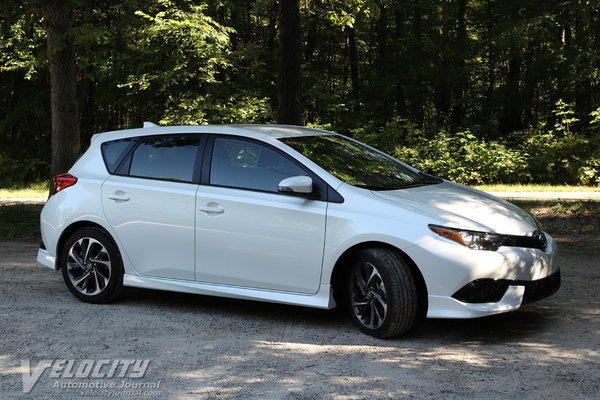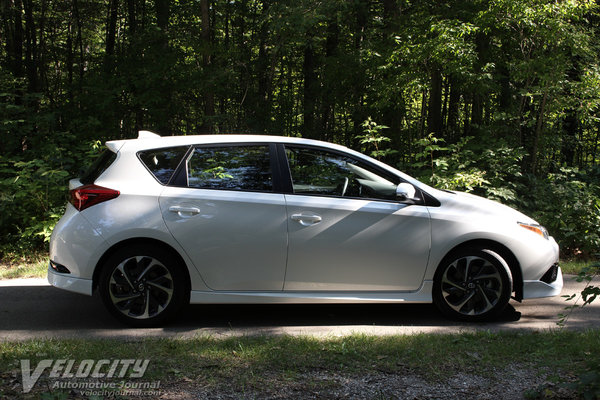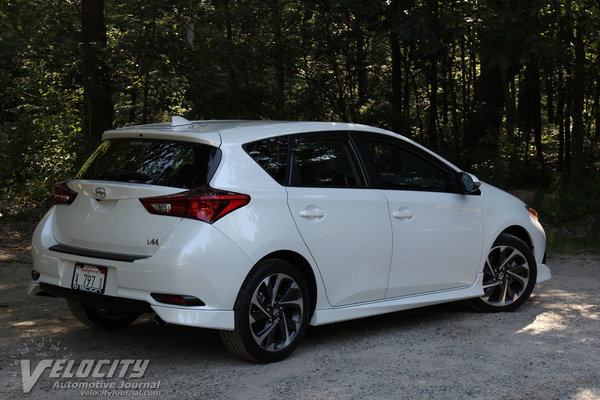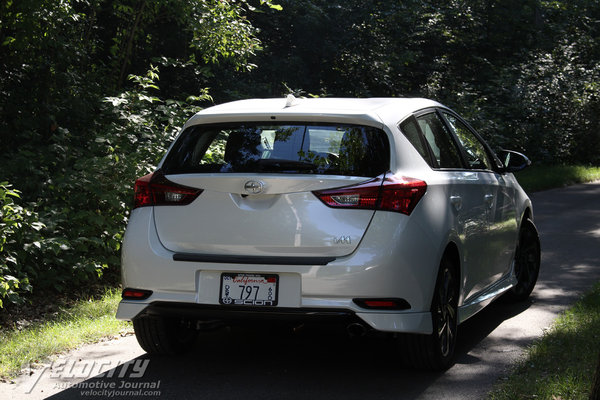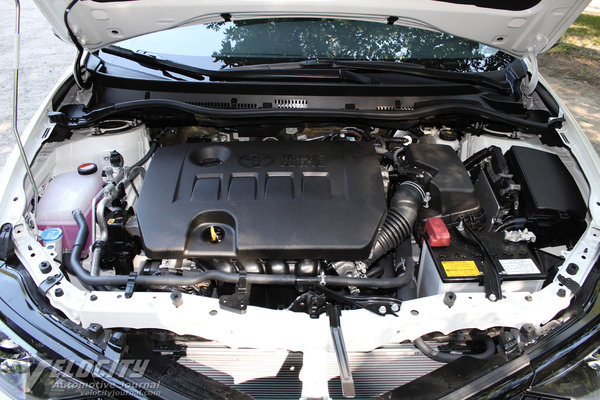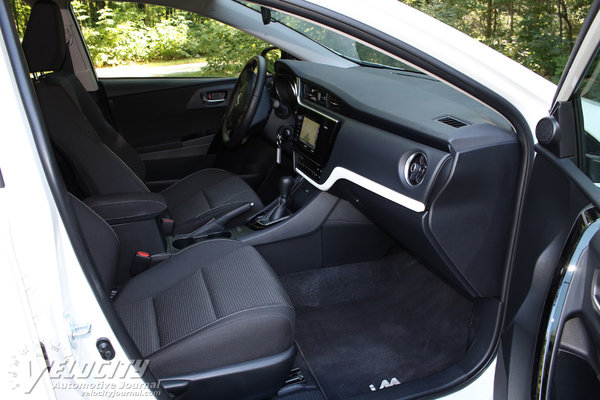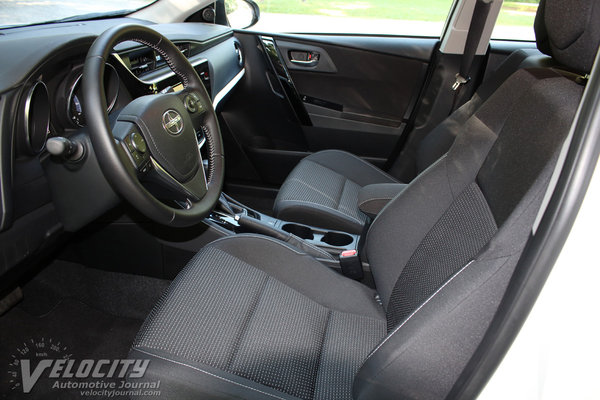2016 Scion iM
08/10/2015
Shahed Hussain
Toyota's affordable Scion brand has been limited by a vehicle portfolio consisting of two compact coupes and a subcompact hatchback. For 2016, Toyota is expanding the lineup by adding the iA subcompact sedan and the iM compact hatchback to attract more customers to Scion. Based on the European-market Auris, Toyota rebadged it as the Scion iM for the US market.
As with other Scions, iM factory options are limited to a choice of transmission and exterior colors. Pricing starts at $18,460 with the 6-speed manual gearbox, and $19,200 for the CVT automatic, plus a $795 delivery fee. Standard equipment includes dual-zone air conditioning, power folding exterior mirrors, leather-wrapped tilt/telescoping steering wheel, cruise control, rearview camera, Pioneer audio system with touchscreen, Bluetooth phone and audio compatibility, and 17-inch diameter alloy wheels. Other available options include a navigation system, floor mats, and a trunk cargo mat. Owners can customize their iM with TRD accessories such as an air intake, stabilizer bars, and lowering springs.
The Scion iM shares its aluminum alloy 2ZR-FAE 1.8L inline-4 with the Corolla Eco sedan. Valvematic variable valve-timing, dual overhead cams and fuel injection yield 137-bhp @ 6,100 RPM and peak torque of 126 lb.-ft. @ 4,000 RPM. Despite the identical engine, the iM loses three horsepower to the Corolla ECO.
Transmission choices consist of a 6-speed manual or optional CVT (continuously variable transmission) which simulates a 7-speed automatic. The manual gearbox has overdrive ratios in fourth (0.971:1), fifth (0.818:1) and sixth (0.700:1), coupled to a 4.214:1 axle ratio. Opting for the CVT gives an extremely tall 0.396:1 overdrive ratio combined with a 5.045:1 axle ratio. EPA fuel consumption numbers for both transmissions are similar: 27/36 MPG (city/hwy.) for the manual vs. 28/37 MPG (city/hwy.) for the CVT.
Although a semi-independent torsion beam rear suspension is common in this class, the Scion iM uses a double wishbone independent suspension layout with coil springs, dampers, and stabilizer bar. The front suspension is a conventional MacPherson(R) setup with a stabilizer bar. Brakes are discs at all four corners: 11.7 in. diameter rotors in front and 11.0 in. diameter rotors in back. Standard 17-inch diameter alloy wheels are shod with 225/45R17 Toyo Proxes all-season tires. Steering is via an electrically-assisted rack-and-pinion setup with 2.59 turns lock-to-lock. Smart Stop Technology (SST), ABS, Traction Control (TRAC), and Vehicle Stability Control (VSC) are standard. The manual gearbox iM weighs in at 2,943 lbs., but the CVT is slightly heavier at 3,031 lbs.
Interior design and materials are a cut above most other cars in its class. The dashboard, center console and most other touch points are padded. Gloss black and gray hues dominate the interior color theme, broken by a slash of padded white trim across the dash. The cloth upholstered front seats provide decent lateral support, but adjustability is limited to manual fore/aft and seatback angle, plus height adjustment for the driver. Split rear seats fold down nearly flat to maximize cargo capacity. The fat leather-wrapped steering wheel has audio and mobile phone controls integrated on the spokes. Gauges consist of a tachometer and speedometer with inset fuel and coolant temperature gauges. A central information display shows trip computer and other vehicle data. The gated CVT shift lever has both manual and sport modes for additional shift control. A dual-mode climate control system allows both driver and front passenger to maintain their preferred temperature. At midday the dim Pioneer audio display is barely legible, although the optional navigation system proved useful through the driving route during the press preview. The audio system supports Pandora(R) and other streaming audio services via Bluetooth, but XM satellite radio is not available.
During our short drive in the Scion iM, we were impressed with its firm, tightly damped ride and steering precision. Even over patched roads the suspension soaked up most bumps without incident. The electrically-assisted steering is tuned for moderate effort and has excellent on-center response. Driving on winding roads, the iM tracked through with minimal body roll. It seems that Toyota left the European suspension tuning intact when it transformed the Auris into the iM.
The 1.8L inline-4 occasionally struggles to accelerate the iM from a stop, especially uphill with the air conditioning on. Maximum torque occurs at 4,000 RPM, but with only 126 lb.-ft. available to accelerate the 1.5 ton iM, another 10-15% extra torque would be appreciated. Once underway, the 1.8L is smooth and unobtrusive, and its midrange throttle response is adequate when lightly loaded.
Between the CVT and manual gearbox, the CVT is likely a superior choice for most customers. Intelligent shift programming minimizes engine drone at maximum throttle, and the CVT adjusts engine RPM as needed for optimal fuel consumption. We drove the iM with the manual gearbox and discovered clutch engagement occurs near the top of pedal travel, so executing smooth gear changes was difficult until we became acclimated to the clutch and long throw shift lever. Also, adopting the taller fifth and sixth gear ratios from the Corolla gearbox would better suit typical American driving conditions.
The iM hatchback is a welcome addition to the lineup as Toyota slowly repositions Scion as a mainstream brand. Attracting new customers looking for a combination of practicality, dynamic handling and excellent value is the iM's mission. Aside from a few minor powertrain improvement recommendations, we welcome the iM as another solid entrant to the affordable hatchback segment.

